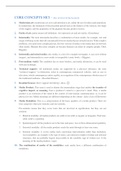Class notes
Media comparison and Intermediality exam core concepts
- Course
- Institution
Intermedia: The term intermedia describes a combination of more media, for example, text and image. Defining works that fall conceptually between media that are already known. With complex problems, you need more complicated art, the best version of media is the media that are between other media....
[Show more]



